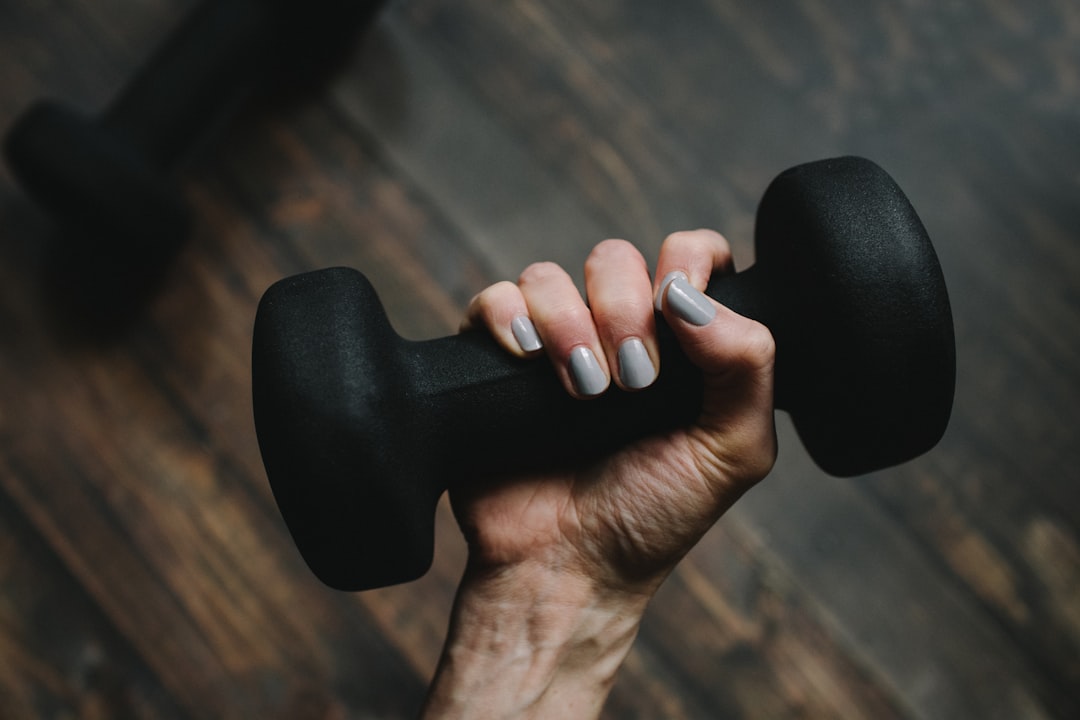As you age, particularly after the age of 50, you may notice changes in your body that can be disheartening. One of the most significant changes is muscle loss, a condition known as sarcopenia. This gradual decline in muscle mass and strength can begin as early as your 30s, but it often accelerates after you hit the half-century mark.
You might find that everyday activities become more challenging, and you may feel less energetic than you used to. Understanding the reasons behind this muscle loss is crucial for taking proactive steps to mitigate its effects. Muscle loss occurs due to a combination of factors, including hormonal changes, decreased physical activity, and nutritional deficiencies.
As you age, your body produces less testosterone and growth hormone, both of which are vital for muscle maintenance and growth. Additionally, if you have been less active over the years, your muscles may not receive the stimulation they need to stay strong. Recognizing these factors can empower you to make informed decisions about your health and fitness as you navigate this new chapter in your life.
Key Takeaways
- Muscle loss after 50 is a natural part of aging, but can be managed with the right approach to exercise and nutrition.
- Resistance training is crucial for maintaining muscle mass and strength as we age, and can help prevent muscle loss.
- Incorporating protein-rich foods into your diet is essential for muscle maintenance and repair, especially as we get older.
- Vitamin D plays a key role in muscle health, so it’s important to ensure you’re getting enough through sunlight and/or supplements.
- Managing stress and getting enough sleep are important factors in maintaining muscle health, as they can impact recovery and overall well-being.
Importance of Resistance Training
To combat muscle loss effectively, incorporating resistance training into your routine is essential. This type of exercise involves using weights or resistance bands to create tension in your muscles, which stimulates growth and strength. You may find that engaging in resistance training not only helps preserve your muscle mass but also enhances your overall physical function.
By lifting weights or performing bodyweight exercises, you can improve your balance, coordination, and even bone density, which is particularly important as you age. You might be surprised to learn that resistance training doesn’t have to be overly strenuous or time-consuming. Even short sessions a few times a week can yield significant benefits.
Start with lighter weights or resistance bands and gradually increase the intensity as you become more comfortable. The key is consistency; by making resistance training a regular part of your routine, you can effectively counteract the effects of aging on your muscles and maintain a higher quality of life.
Incorporating Protein-Rich Foods into Your Diet

Nutrition plays a pivotal role in maintaining muscle health, especially as you age. One of the most critical nutrients for muscle preservation is protein. As you grow older, your body requires more protein to stimulate muscle protein synthesis effectively.
You may want to focus on incorporating high-quality protein sources into your diet, such as lean meats, fish, eggs, dairy products, legumes, and nuts. By doing so, you can provide your muscles with the building blocks they need to repair and grow. It’s also essential to spread your protein intake throughout the day rather than consuming it all in one meal.
Aim for a balanced approach by including protein-rich foods in each meal and snack. This strategy not only supports muscle maintenance but also helps regulate your appetite and energy levels. You might find that planning your meals ahead of time makes it easier to meet your protein goals and ensures that you’re fueling your body appropriately for optimal performance.
The Role of Vitamin D in Muscle Health
| Study | Findings |
|---|---|
| 1. Effects of Vitamin D on Muscle Strength | Higher levels of Vitamin D are associated with greater muscle strength. |
| 2. Vitamin D Deficiency and Muscle Function | Low levels of Vitamin D can lead to muscle weakness and impaired function. |
| 3. Vitamin D and Muscle Recovery | Vitamin D may play a role in muscle recovery after exercise-induced damage. |
| 4. Vitamin D Supplementation and Muscle Health | Supplementation with Vitamin D has been shown to improve muscle function in deficient individuals. |
Vitamin D is another crucial component of muscle health that often goes overlooked. This vitamin plays a vital role in calcium absorption and bone health, but it also has a significant impact on muscle function. Research suggests that adequate levels of vitamin D can enhance muscle strength and reduce the risk of falls and fractures in older adults.
If you find yourself feeling fatigued or experiencing muscle weakness, it may be worth checking your vitamin D levels. You can obtain vitamin D through sunlight exposure, certain foods like fatty fish and fortified dairy products, or supplements if necessary. If you’re not getting enough sun exposure due to lifestyle or geographical factors, consider discussing supplementation with your healthcare provider.
By ensuring that you have sufficient vitamin D levels, you can support not only your muscle health but also your overall well-being as you age.
Managing Stress and Sleep for Muscle Maintenance
Stress and sleep are two often-overlooked factors that can significantly impact muscle health. Chronic stress can lead to elevated cortisol levels, which may contribute to muscle breakdown over time. You might find that managing stress through mindfulness practices such as meditation, yoga, or deep breathing exercises can help mitigate its effects on your body.
By prioritizing relaxation techniques, you can create a more balanced environment for muscle maintenance. Sleep is equally important; during deep sleep stages, your body undergoes repair processes that are essential for muscle recovery and growth. If you’re not getting enough quality sleep, you may find it challenging to maintain your strength and energy levels.
Aim for 7-9 hours of restful sleep each night by establishing a consistent sleep schedule and creating a calming bedtime routine. By addressing both stress and sleep, you can create a supportive environment for your muscles to thrive.
Benefits of High-Intensity Interval Training

High-Intensity Interval Training (HIIT) is an effective workout method that combines short bursts of intense exercise with periods of rest or lower-intensity activity. This approach can be particularly beneficial for those over 50 looking to maintain muscle mass while also improving cardiovascular fitness. You may find that HIIT workouts are time-efficient and can be adapted to suit your fitness level, making them an excellent option for busy schedules.
Incorporating HIIT into your routine can also help boost metabolism and promote fat loss while preserving lean muscle mass. The intensity of these workouts stimulates various physiological responses that contribute to improved muscle function and endurance. If you’re looking for a way to challenge yourself while keeping workouts engaging, consider adding HIIT sessions to your weekly exercise plan.
Balancing Cardio and Strength Training
While resistance training is crucial for maintaining muscle mass, it’s essential not to overlook cardiovascular exercise’s role in overall health. Balancing cardio with strength training can provide comprehensive benefits for your body as you age. Cardiovascular activities like walking, swimming, or cycling improve heart health and endurance while also aiding in weight management.
You might consider structuring your weekly workout routine to include both types of exercise. For instance, aim for two to three days of strength training combined with two to three days of cardio each week. This balanced approach allows you to reap the benefits of both worlds—enhancing muscle strength while promoting cardiovascular fitness—ultimately leading to better overall health and vitality.
Avoiding Overtraining and Injury
As you embark on your fitness journey after 50, it’s crucial to listen to your body and avoid overtraining. Pushing yourself too hard without adequate rest can lead to injuries that may set back your progress significantly. You might find it helpful to incorporate rest days into your routine or alternate between different types of workouts to give specific muscle groups time to recover.
Pay attention to any signs of fatigue or discomfort during exercise; these could be indicators that you need to adjust your routine or take a break. Prioritizing recovery is just as important as the workouts themselves; consider incorporating stretching or mobility exercises into your regimen to enhance flexibility and reduce the risk of injury.
Seeking Professional Guidance and Support
Navigating the world of fitness after 50 can be overwhelming at times, especially with the myriad of information available online. Seeking professional guidance from a certified personal trainer or physical therapist can provide valuable insights tailored specifically to your needs and goals. A professional can help design a personalized workout plan that considers any limitations or concerns you may have.
Additionally, joining group classes or fitness communities can offer motivation and support from others who share similar goals. Surrounding yourself with like-minded individuals can create a sense of accountability and encouragement as you work towards maintaining your muscle health.
Making Lifestyle Changes for Long-Term Muscle Health
Sustaining muscle health requires more than just short-term efforts; it involves making lasting lifestyle changes that prioritize physical activity and nutrition. You might consider setting realistic goals for yourself—whether it’s committing to regular exercise or improving your dietary choices—and tracking your progress along the way. Small changes can lead to significant results over time.
Incorporating movement into your daily routine is another effective strategy; consider taking the stairs instead of the elevator or going for short walks throughout the day. By making these adjustments part of your lifestyle rather than viewing them as temporary fixes, you’ll be better equipped to maintain muscle health well into your later years.
Celebrating Progress and Staying Motivated
As you work towards maintaining muscle health after 50, it’s essential to celebrate your progress along the way. Acknowledging even small achievements can boost motivation and reinforce positive habits. Whether it’s lifting heavier weights than before or simply feeling more energetic throughout the day, take time to recognize how far you’ve come.
Staying motivated can sometimes be challenging; consider setting new goals or trying different activities to keep things fresh and exciting.
By focusing on the positive aspects of your journey, you’ll cultivate a mindset that supports long-term success in maintaining muscle health as you age gracefully.
As we age, maintaining muscle mass becomes increasingly important, especially after the age of 50.
To combat this, it’s crucial to engage in regular strength training exercises and ensure adequate protein intake. For more detailed information on how to manage and prevent muscle loss as you age, you can read a related article on this topic by visiting Explore Senior Health. This resource provides valuable insights and practical tips to help you maintain muscle health and overall well-being as you grow older.
FAQs
What is muscle loss after 50?
Muscle loss after 50, also known as sarcopenia, refers to the age-related decline in muscle mass, strength, and function that occurs after the age of 50.
What are the causes of muscle loss after 50?
The causes of muscle loss after 50 include hormonal changes, decreased physical activity, poor nutrition, and chronic illnesses. Additionally, the natural aging process can also contribute to muscle loss.
What are the effects of muscle loss after 50?
The effects of muscle loss after 50 include decreased strength, reduced mobility, increased risk of falls and fractures, and a decline in overall physical function. It can also lead to a decrease in metabolism and an increase in body fat.
How can muscle loss after 50 be prevented or managed?
Muscle loss after 50 can be prevented or managed through regular resistance training exercises, consuming an adequate amount of protein, maintaining a healthy weight, and staying physically active. It is also important to address any underlying health conditions that may contribute to muscle loss.
What are some recommended exercises to prevent muscle loss after 50?
Recommended exercises to prevent muscle loss after 50 include strength training, such as weightlifting, bodyweight exercises, and resistance band workouts. These exercises help to build and maintain muscle mass, strength, and function. It is important to consult with a healthcare professional before starting any new exercise program, especially for individuals with existing health conditions.
